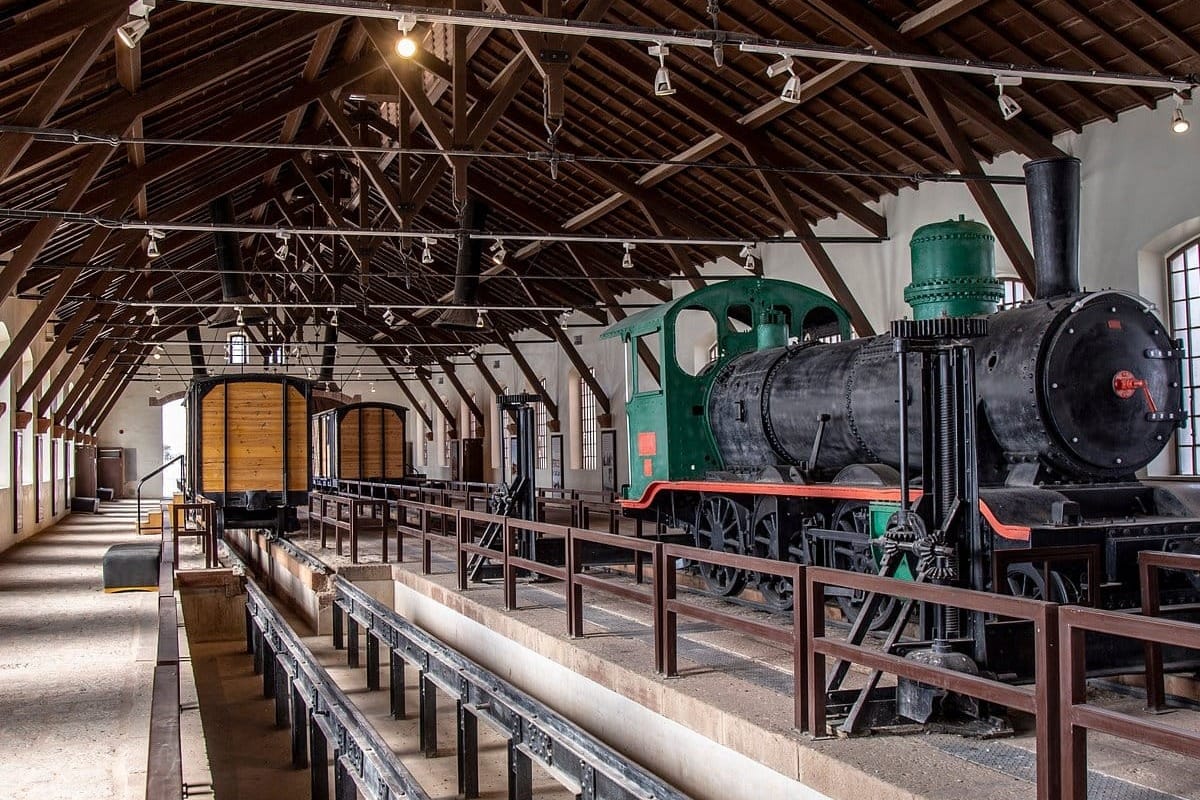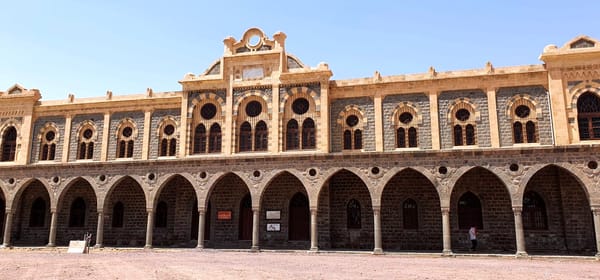The Al Hijaz Railway Station in Madinah is not just a relic of the past; it is a cornerstone of Islamic heritage and a marvel of early 20th-century engineering. Commissioned during the Ottoman Empire, this station was once a critical stop for pilgrims enroute to Makkah.
Today, it stands as a museum preserving its legacy, attracting history enthusiasts, engineers, and curious travelers alike. If you're exploring Madinah on the hop-on hop-off bus tour, this site makes for a perfect cultural stop along your route.
From strategic wartime significance to architectural uniqueness, here are ten detailed and captivating facts about the historic Hijaz Railway Station.
1. The Railway Reduced Pilgrimage Time from 40 Days to 5
Before the Hijaz Railway, pilgrims often faced a perilous 40-day journey on camelback from Damascus to Madinah. The completion of the railway in 1908 revolutionized pilgrimage travel by cutting this duration down to just five days. This not only made the journey safer but also more accessible for Muslims across the Ottoman Empire. The railway dramatically increased the number of pilgrims who could make the trip, showcasing how infrastructure can directly impact spiritual practice.
2. Commissioned by Sultan Abdul Hamid II as a Symbol of Islamic Unity
The Hijaz Railway was an ambitious project launched in 1900 by Sultan Abdul Hamid II. Intended to connect Damascus to the holy city of Makkah, it aimed to facilitate pilgrimage while reinforcing Ottoman political and spiritual influence. Although the railway reached Madinah, the final extension to Makkah was never completed due to political resistance and logistical challenges. Nevertheless, the effort represented a unifying vision for the Muslim world.
3. Madinah Station Spans Over 90,000 Square Meters
One of the largest Ottoman-era railway stations, the Madinah terminal covered 90,000 square meters. It included four parallel tracks, a locomotive depot, maintenance workshops, and administrative offices. The architecture is a blend of Ottoman design and local elements, such as arched doorways and domed ceilings, emphasizing its cultural integration and regional importance.
4. The Railway Was Built Through Harsh Desert Terrain
Constructing the railway was an enormous engineering challenge. The line traversed arid deserts, mountainous areas, and flood-prone regions. Water scarcity, sand dunes, and extreme temperatures posed constant threats. German engineer Heinrich Meissner, who had experience with the Baghdad Railway, led the construction. His leadership was vital in overcoming the technical and environmental difficulties that plagued the project from start to finish.
5. Telegraph Lines Were Laid Alongside the Tracks
To ensure communication and security across the vast and remote landscape, a telegraph line was constructed parallel to the railway. This technological innovation allowed for instant communication between stations, drastically improving coordination and safety. In an era before modern telecommunications, this was a groundbreaking feature that boosted the efficiency of both passenger and military logistics.
6. Financed by Worldwide Muslim Donations
The Hijaz Railway was not just an Ottoman imperial project; it was a pan-Islamic initiative. Muslims from across the globe contributed financially to its construction. Many donors received commemorative medals as tokens of appreciation. This global support reflects the significance of the railway in the collective religious consciousness of the Muslim Ummah and stands as a historical example of international solidarity.
7. A Focal Point During the Arab Revolt and World War I
The railway’s strategic importance made it a target during World War I. It was frequently sabotaged by Arab rebel forces led by T.E. Lawrence, famously known as "Lawrence of Arabia," to disrupt Ottoman supply routes. Madinah Station, being a critical terminus, witnessed significant military activity and was central to these wartime dynamics. Parts of the damaged infrastructure remain preserved as silent witnesses to this turbulent period.
8. The Hejaz Railway Museum Preserves Ottoman-Era Locomotives and Artifacts
Established in 2006, the Hejaz Railway Museum is housed within the original station complex in Madinah. It features restored steam locomotives, period passenger carriages, original tickets, tools, and black-and-white photographs. Visitors can trace the railway's timeline and its impact on the region through carefully curated exhibits. The museum also includes 14 themed halls dedicated to the broader history of Madinah.
9. The Station Combines Ottoman and Hijazi Architectural Styles
The architectural design of the station is a visual narrative of cultural harmony. Traditional Ottoman elements such as domes, geometric tilework, and courtyards are integrated with Hijazi features like coral stone walls and latticework windows. This fusion not only created a functional travel hub but also an aesthetically enduring landmark.
10. The Station Now Serves as a Cultural Site
Once buzzing with steam engines and pilgrims, the Al Hijaz Railway Station now stands in quiet dignity, its sandstone walls holding echoes of a glorious past. Since its transformation into the Hejaz Railway Museum in 2006, it has offered visitors a captivating journey through time, filled with relics of engineering prowess and faith-driven travel. Though its doors are currently closed for restoration, the site is poised for a revival that promises to reintroduce this sleeping giant to a new generation of explorers. Its anticipated reopening is eagerly awaited by heritage lovers and history buffs alike.
Plan Your Visit
The Al Hijaz Railway Station is located just a short distance from Masjid-e-Nabawi in Madinah. It's conveniently accessible via the hop-on hop-off bus service. A typical itinerary would involve boarding the bus at the Masjid un-Nabawi stop and disembarking at the Hijaz Railway Station, spending about 1–2 hours exploring the museum and grounds.
While you currently can't enter the museum, you can still admire its grand exterior and historical ambiance from the bus. From there, continue your journey to other ziyarat destinations like Quba Mosque, Qiblatain Mosque, or the Seven Mosques area.
May your travels through Madinah continue to be full of discovery and inspiration. See you on the next stop!



